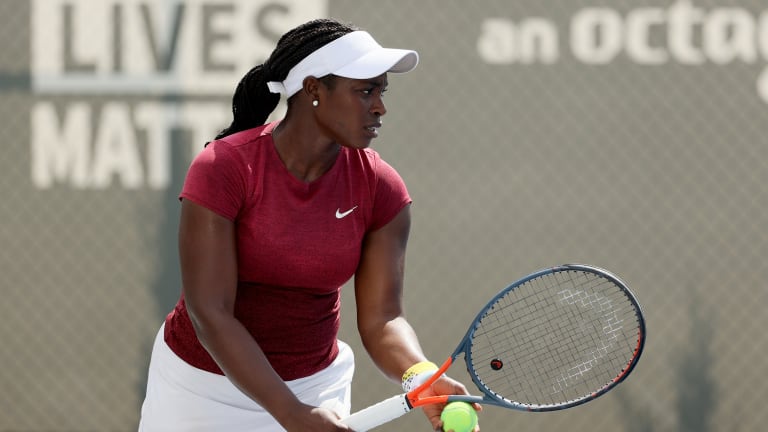Cincinnati, USA
Sound of No Hands Clapping: Stephens' struggles continue vs. Garcia
By Aug 23, 2020Cincinnati, USA
From Queen of Clay to fast-court champion: Iga Swiatek's serve delivers Cincinnati title
By Aug 19, 2025Cincinnati, USA
Iga Swiatek storms to Cincinnati Open title over Jasmine Paolini
By Aug 19, 2025Cincinnati, USA
Carlos Alcaraz wins Cincinnati Open title after Jannik Sinner retires with illness
By Aug 18, 2025Cincinnati, USA
Iga Swiatek vs. Jasmine Paolini: Where To Watch, Cincinnati Open Preview
By Aug 18, 2025Cincinnati, USA
Iga Swiatek now a win away from returning to No. 2 ranking after reaching Cincinnati final
By Aug 17, 2025Cincinnati, USA
Jannik Sinner vs. Carlos Alcaraz: Where To Watch, Cincinnati Open Preview
By Aug 17, 2025Cincinnati, USA
Carlos Alcaraz beat an ailing Alexander Zverev to set up another final with Jannik Sinner
By Aug 17, 2025Cincinnati, USA
Kudermetova vs. Paolini, Rybakina vs. Swiatek: Cincinnati women's semifinal previews
By Aug 17, 2025Cincinnati, USA
Cincy Diary: Coco Gauff’s US Open climb gets steeper, and a shell-shocked Ben Shelton hits a wall
By Aug 16, 2025Sound of No Hands Clapping: Stephens' struggles continue vs. Garcia
Sloane Stephens’ 2020 match record is now 1-7, her lone victory coming to a player barely ranked inside the Top 500.
Published Aug 23, 2020
Advertising

Sound of No Hands Clapping: Stephens' struggles continue vs. Garcia
© Getty Images
Advertising

Sound of No Hands Clapping: Stephens' struggles continue vs. Garcia